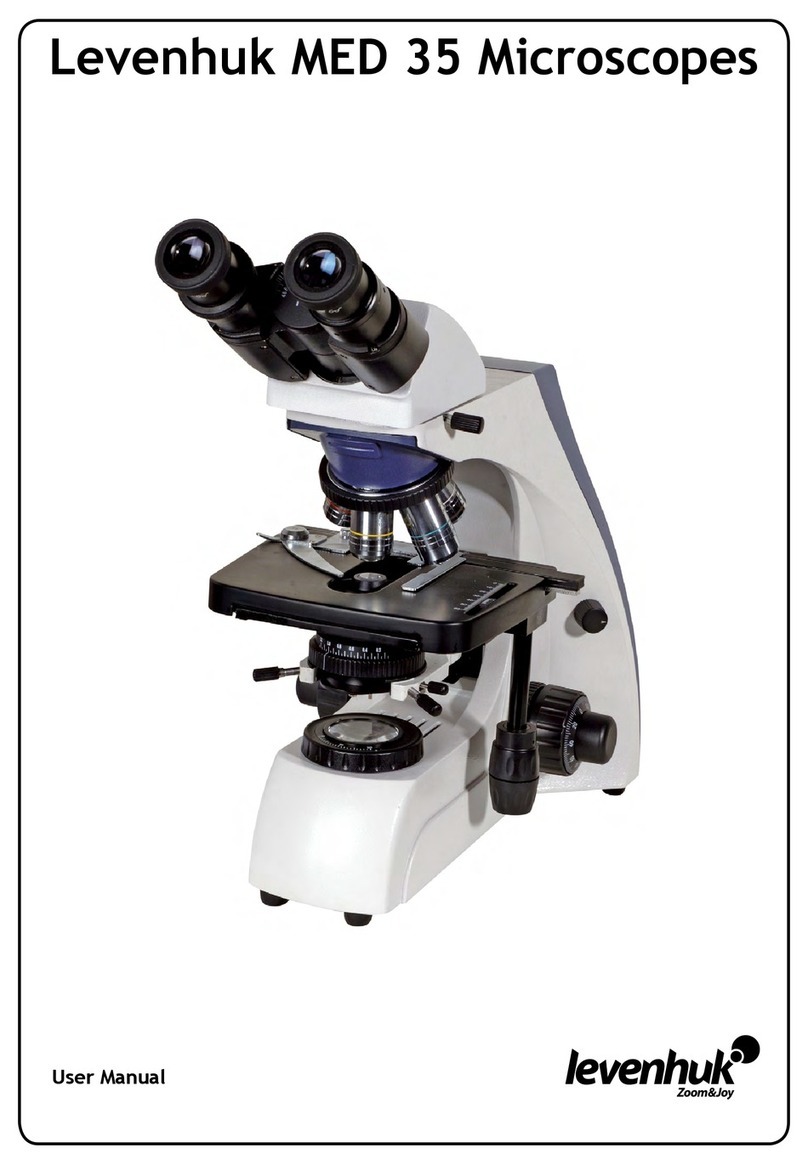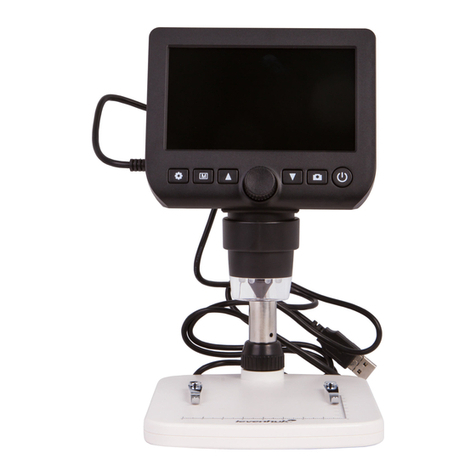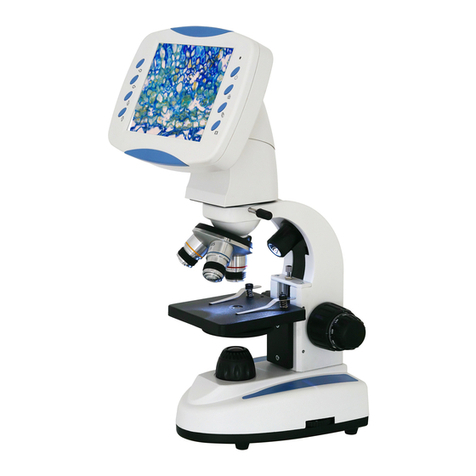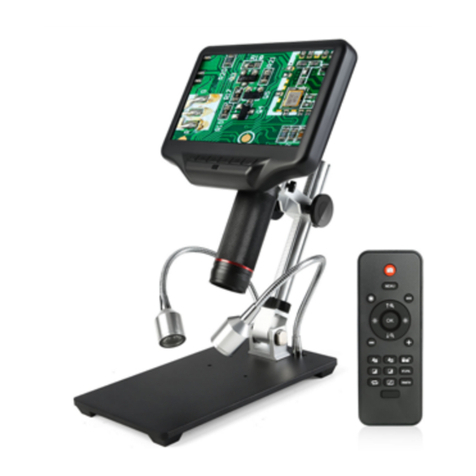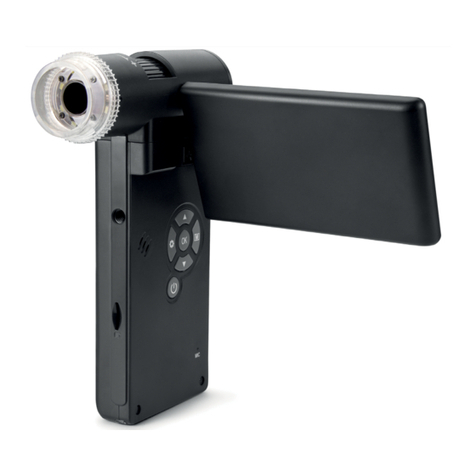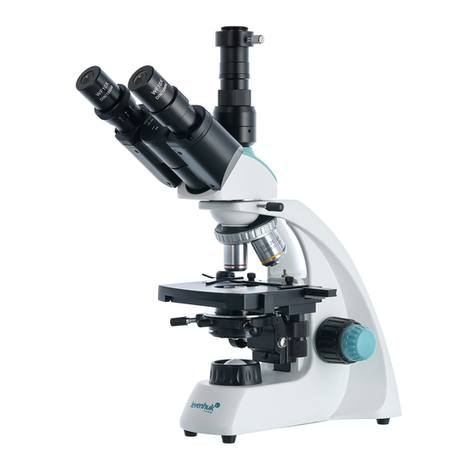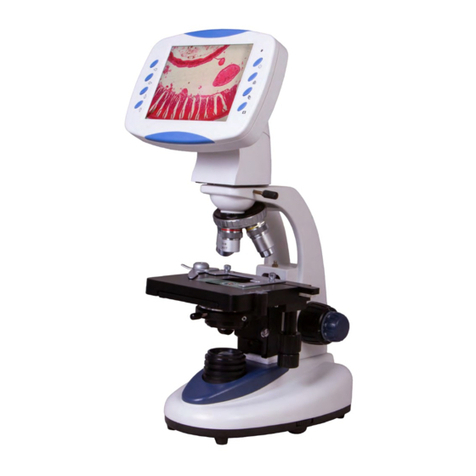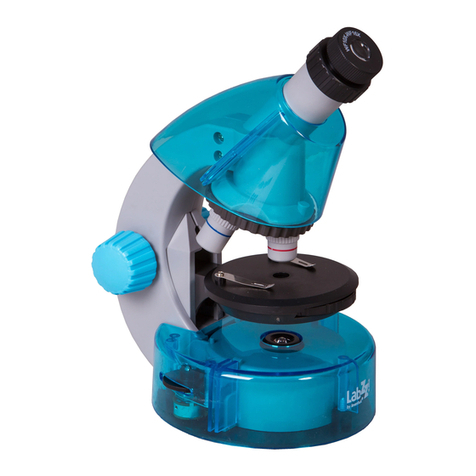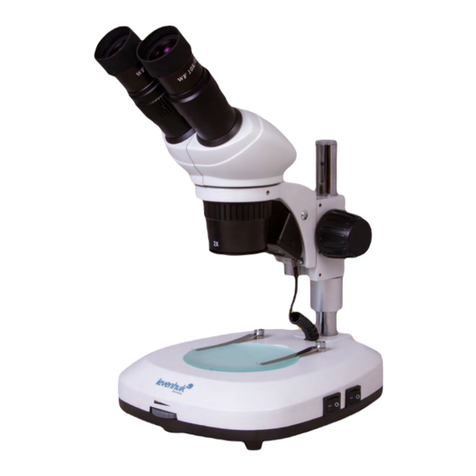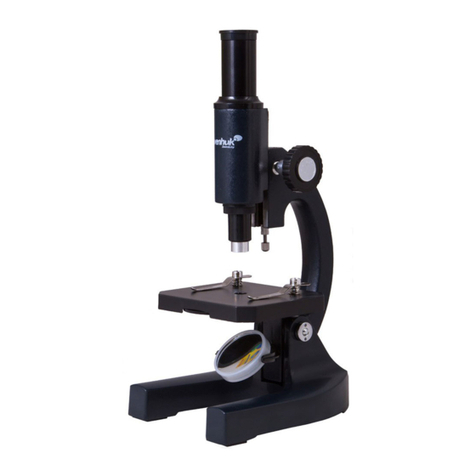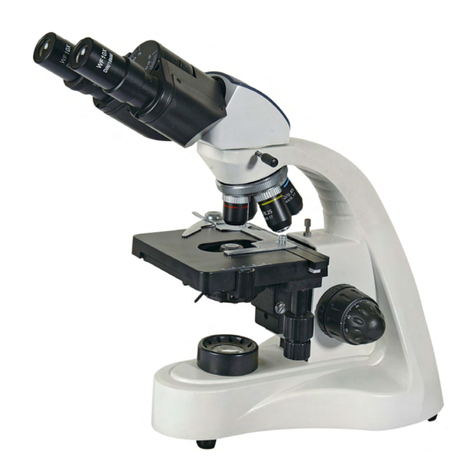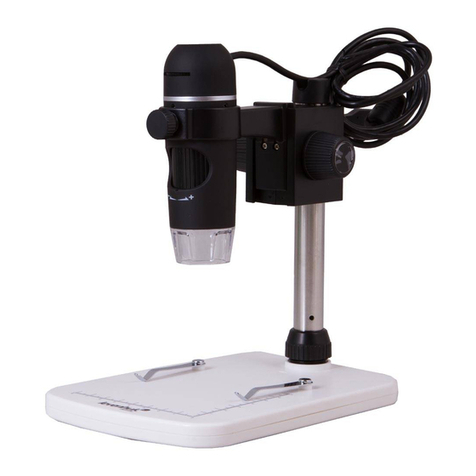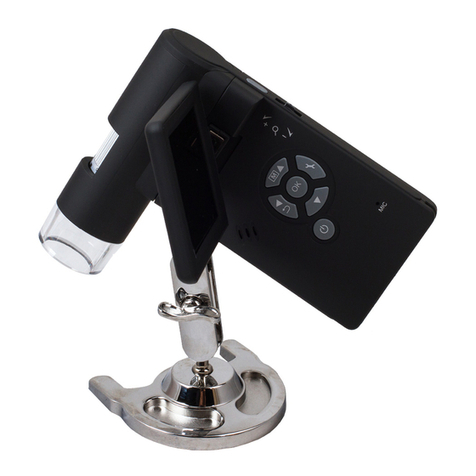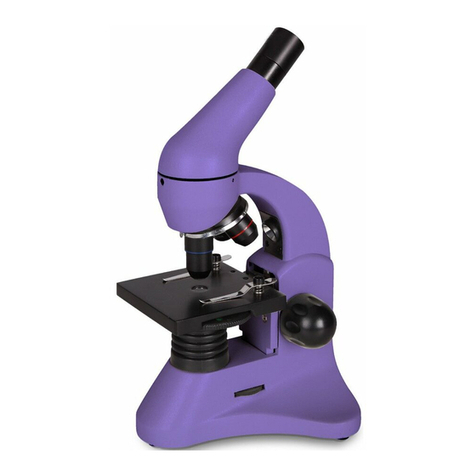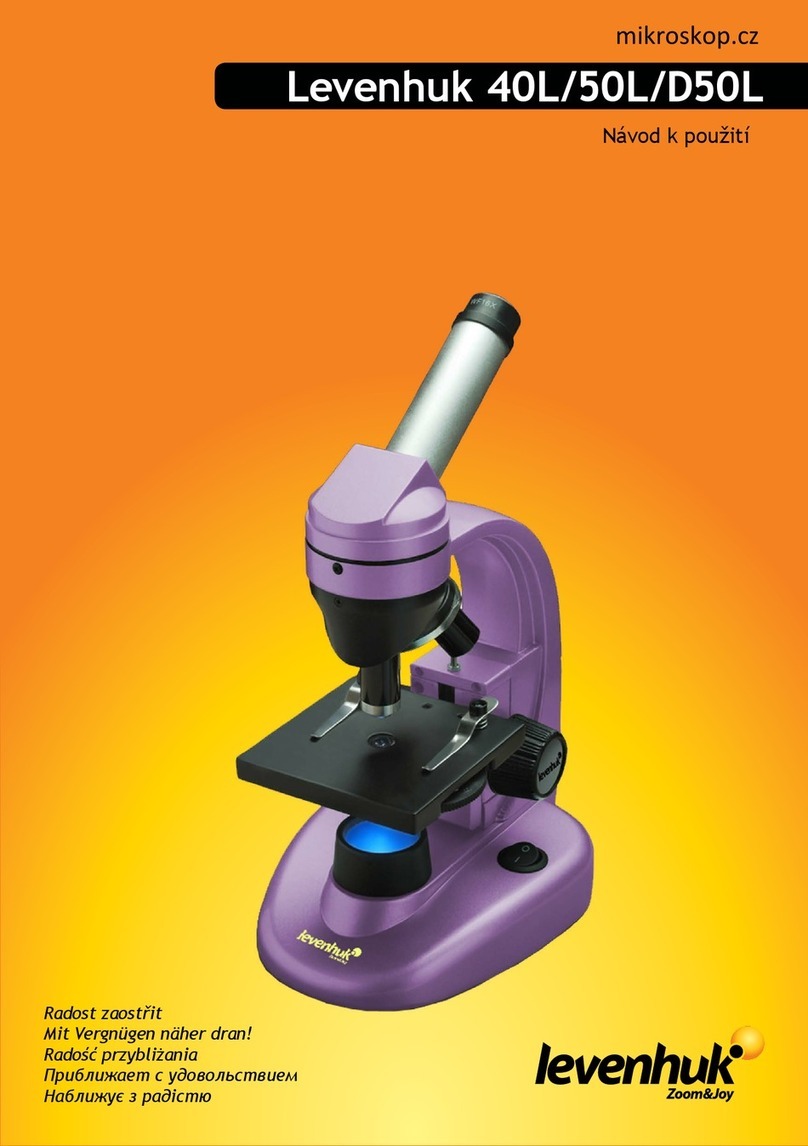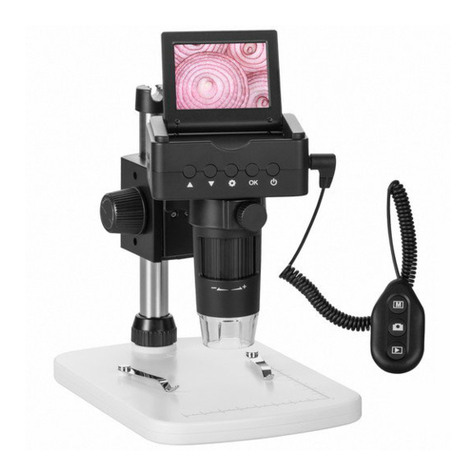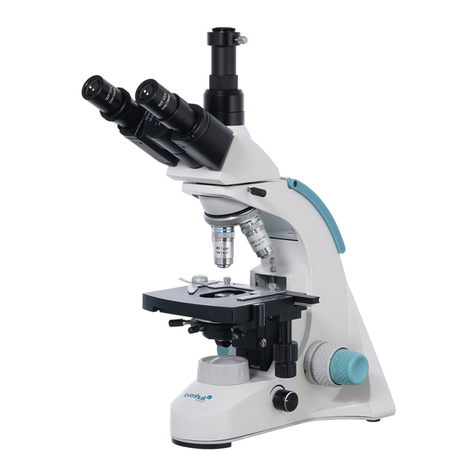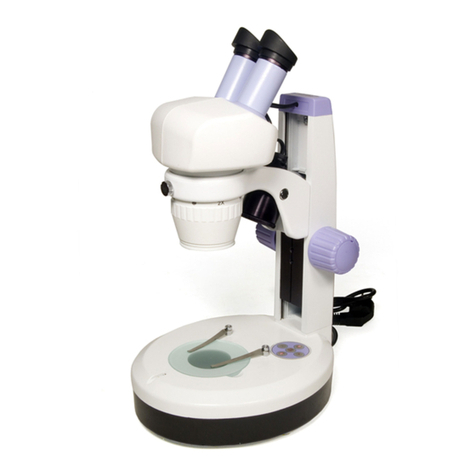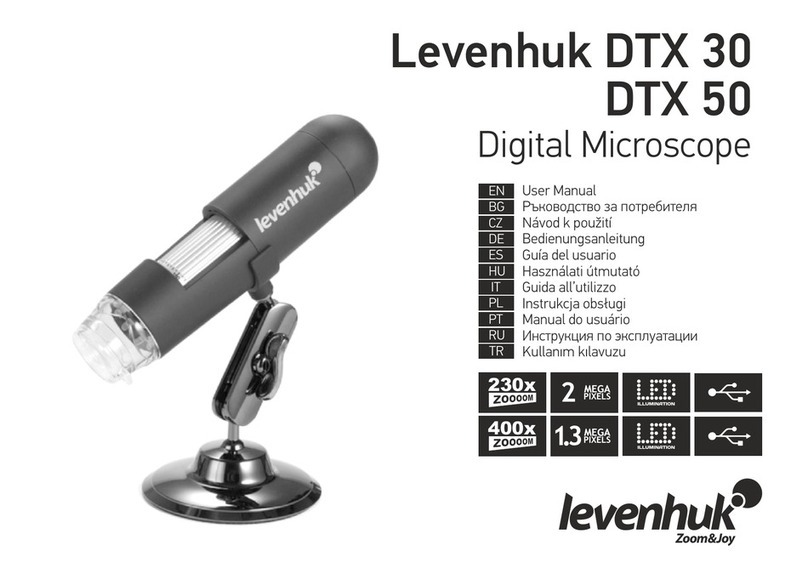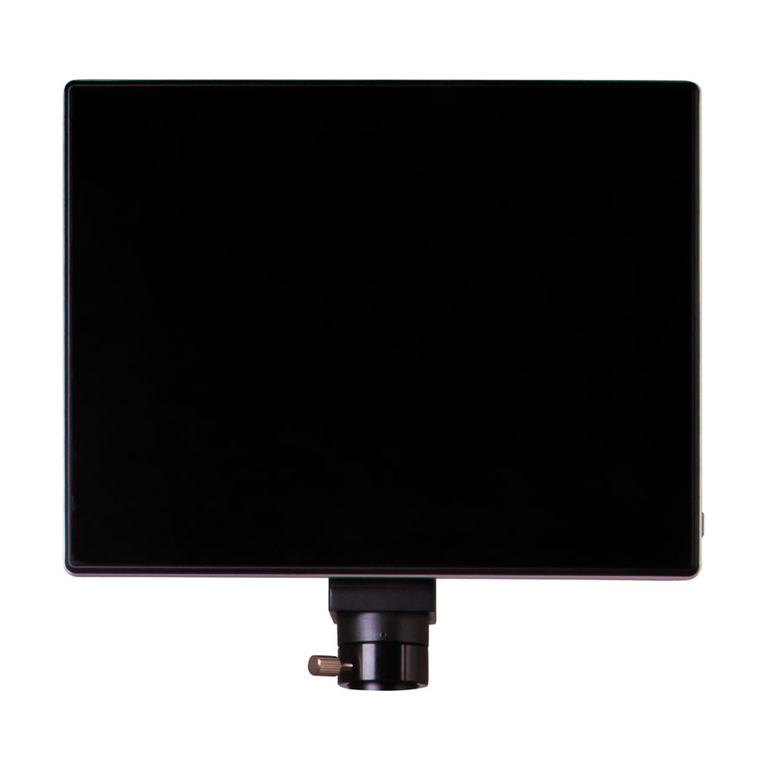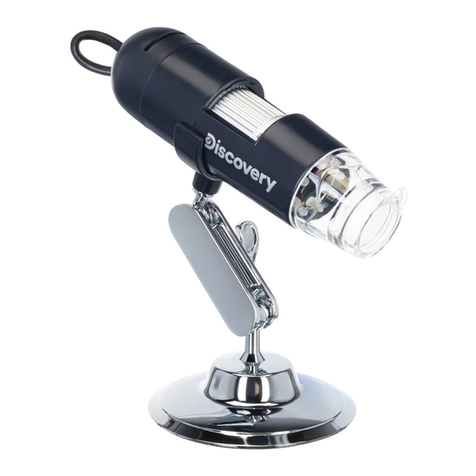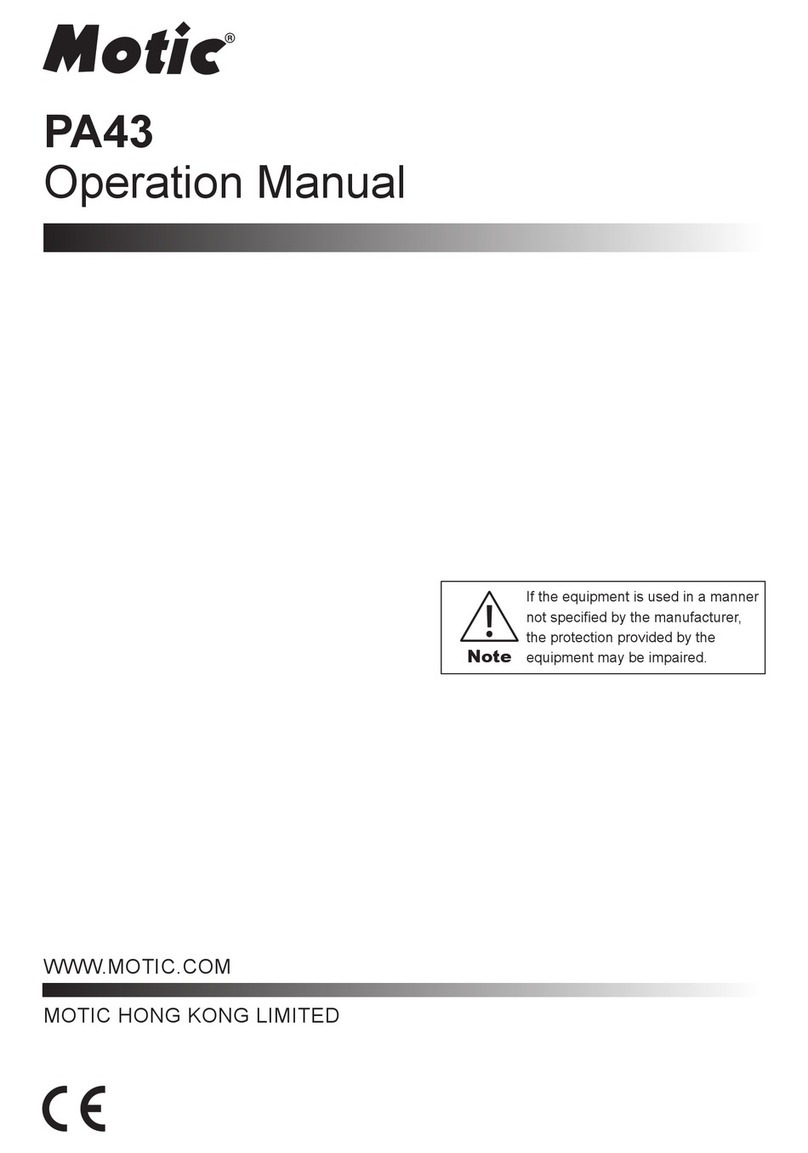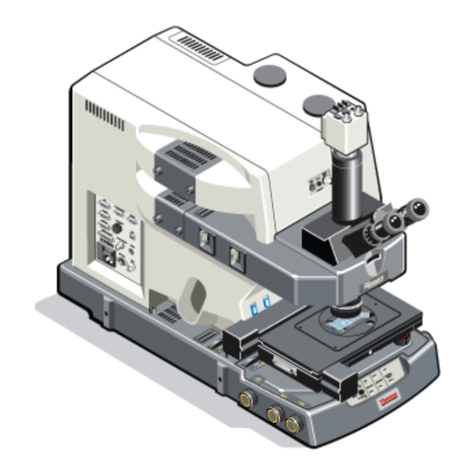
6
Care and maintenance
• Never, under any circumstances, look directly at the Sun, another bright source of light or at a laser through this device, as
this may cause PERMANENT RETINAL DAMAGE and may lead to BLINDNESS.
• Take necessary precautions when using the device with children or others who have not read or who do not fully understand these
instructions.
• After unpacking your microscope and before using it for the rst time check for integrity and durability of every component and
connection.
• Do not try to disassemble the device on your own for any reason. For repairs and cleaning of any kind, please contact your local
specialized service center.
• Protect the device from sudden impact and excessive mechanical force. Do not apply excessive pressure when adjusting focus. Do
not overtighten the locking screws.
• Do not touch the optical surfaces with your ngers. To clean the device exterior, use only special cleaning wipes and special optics
cleaning tools from Levenhuk. Do not use any corrosive or acetone-based uids to clean the optics.
• Abrasive particles, such as sand, should not be wiped o lenses, but instead blown o or brushed away with a soft brush.
• Do not use the device for lengthy periods of time, or leave it unattended in direct sunlight. Keep the device away from water and
high humidity.
• Be careful during your observations, always replace the dust cover after you are nished with observations to protect the device
from dust and stains.
• If you are not using your microscope for extended periods of time, store the objective lenses and eyepieces separately from the
microscope.
• Store the device in a dry, cool place away from hazardous acids and other chemicals, away from heaters, open re and other
sources of high temperatures.
• When using the microscope, try not to use it near ammable materials or substances (benzene, paper, cardboard, plastic, etc.), as
the base may heat up during use, and might become a re hazard.
• Always unplug the microscope from a power source before opening the base or changing the illumination lamp. Regardless of the
lamp type (halogen or incandescent), give it some time to cool down before trying to change it, and always change it to a lamp of
the same type.
• Always use the power supply with the proper voltage, i.e. indicated in the specications of your new microscope. Plugging the
instrument into a dierent power outlet may damage the electric circuitry of the microscope, burn out the lamp, or even cause a
short circuit.
• Seek medical advice immediately if a small part or a battery is swallowed.
Levenhuk International Lifetime Warranty
All Levenhuk telescopes, microscopes, binoculars and other optical products, except for accessories, carry a lifetime warranty against
defects in materials and workmanship. Lifetime warranty is a guarantee on the lifetime of the product on the market. All Levenhuk
accessories are warranted to be free of defects in materials and workmanship for six months from date of retail purchase. Levenhuk
will repair or replace such product or part thereof which, upon inspection by Levenhuk, is found to be defective in materials or
workmanship. As a condition to the obligation of Levenhuk to repair or replace such product, the product must be returned to Levenhuk
together with proof of purchase satisfactory to Levenhuk. This warranty does not cover consumable parts, such as bulbs (electrical,
LED, halogen, energy-saving and other types of lamps), batteries (rechargeable and non-rechargeable), electrical consumables etc. For
further details, please visit our web site: www.levenhuk.com/warranty
If warranty problems arise, or if you need assistance in using your product, contact the local Levenhuk branch.
Levenhuk, Inc. 924-D East 124th Ave. Tampa, FL 33612 USA
Levenhuk® is a registered trademark of Levenhuk, Inc.
© 2019—2020 Levenhuk, Inc. All rights reserved.
www.levenhuk.com
20200124
!
Caution! Please remember that mains voltage in most European countries is 220—240V. If you want to use your device
in a country with a dierent mains voltage standard, remember that use of a converter is absolutely necessary. The
microscope must be grounded. Make sure that the main voltage matches the voltage indicated on the microscope
body.
